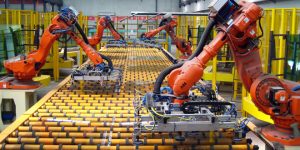The Engineering Challenges in The 21st Century
Technology has dramatically shifted the landscape of today, driving up innovations and enhanced functionalities into the modern world. Opportunities are fast arising as new developments spurt in almost every field, and with it, a growing demand on engineers who are faced with the challenges to broaden their skills and master various technological disciplines. Below are some of the forces driving and shaping the engineering world:
1. GLOBAL SUSTAINABILITY
A growing population and invasive activities on the global environment has raised the question on whether mankind can live in a sustainable manner and for what period of time.
Engineers are constantly faced with the challenge to design technologies and systems that can facilitate global commerce, education and healthcare and reinforce and expand new approaches to find and utilize existing resources. They also play an important role in resource conservation and waste management.
Food supply is threatening to become insufficient because of the increasing demands of rapidly growing populations and economies. This requires the implementation of new engineering approaches such as aquiculture and applications of genetics.
Increased efficiencies in the use of all resources, moderation of consumption and recycling of materials have become imperative engineering challenges that can only be overcome through the development new technologies.
2. URBANIZATION
The rapid population rise has caused an incredible strain on urban systems around the world. Transportation networks are overwhelmed by the desire for mobility, intensified by demographic trends toward urbanization, where jobs and resources are found.
Engineers of the 21st century face the formidable challenge of modernizing the fundamental structures that support civilization. Responding to the challenges emerging from the world’s rapid urban population growth will change how the engineering of public infrastructure is done in the future. The integration of technology into infrastructure systems presents one of the biggest tasks in developing sustainable urban systems.
New technologies and engineering approaches are needed to build and maintain the infrastructure necessary to accommodate the global population while preserving the capacity of the planet to support mankind. Engineers must develop new approaches towards the design, innovation and system integration of all activities to support urbanization.
3. ENERGY AND CLIMATE CHANGE
The current energy infrastructure is heavily reliant upon fossil fuels, which is unsustainable. The continued processing of these fuels poses a great threat to the environment and mankind, particularly within the context of global climate change. There is significant pressure to shift away from the utilization of fossil fuels to non-hydrocarbon energy sources.
The modern society is currently dependent upon the availability of clean, affordable and sustainable energy sources. With emerging economies such as India and Latin America increasing their demands for oil and gas, the imbalance of sourcing a reliable energy source grows more serious.
To address this challenge, economies around the world are investing heavily in research to develop alternative sources to the energy crisis. The European Union, Silicon Valley in the United States, China and Japan are competing to ensure that their research and development bodies and leading businesses innovate the next generation in lighting technologies, energy efficient appliances, renewable energy systems, and fuel efficient cars for the coming decades.
Alternative energy technologies such as nuclear power and renewable energy sources such as solar, wind, or biofuels still require considerable research and development before they evolve to the point of massive utilization.
4. TECHNOLOGICAL ADVANCEMENTS
Technologies are often characterized by exponential growth and can be disruptive in nature with its unrelenting pace to evolve. Their impact on social institutions such as corporations, governments, and learning institutions is often rapid and quite unpredictable. There is constant pressure on engineers to remain current and constantly brush up on technological advancements as they arise.
Researchers in technology must address customer and societal needs and market requirements and not just research for research or technology’s sake.
Though it is impossible to predict what the world will be like even in a few years, the engineering world needs to set out a vision and goal that will fit into long term sustainability for the world. That would allow all engineering efforts and strategies to focus on the development of whatever technologies are needed.
5. SHORTAGE OF ENGINEERS
The world is experiencing a time of rapid technological advancement, driven by engineering. However, the numbers of students studying engineering have declined in recent years at a time when employers face new challenges due to globalization and the need to step up their innovation and technical expertise in order to remain competitive. This decline can be attributed to a growing lack of interest amongst younger people in engineering subjects which is often affiliated as a boring and difficult career choice.
Companies that rely on engineering skills are already in a spirited battle for talent. In the United States, tech companies like Facebook, Amazon and Apple will need to fill upwards of 650,000 new jobs by 2018 to meet their growth projections. In Sub-Saharan Africa alone 2.5 million new engineers and technicians are needed for the region to achieve the UN Millennium Development Goal of improved access to clean water and sanitation.
Countries and companies are now investing in educating more engineers for the future by re branding the misconceptions around the field as well as providing incentives to attract more students.




